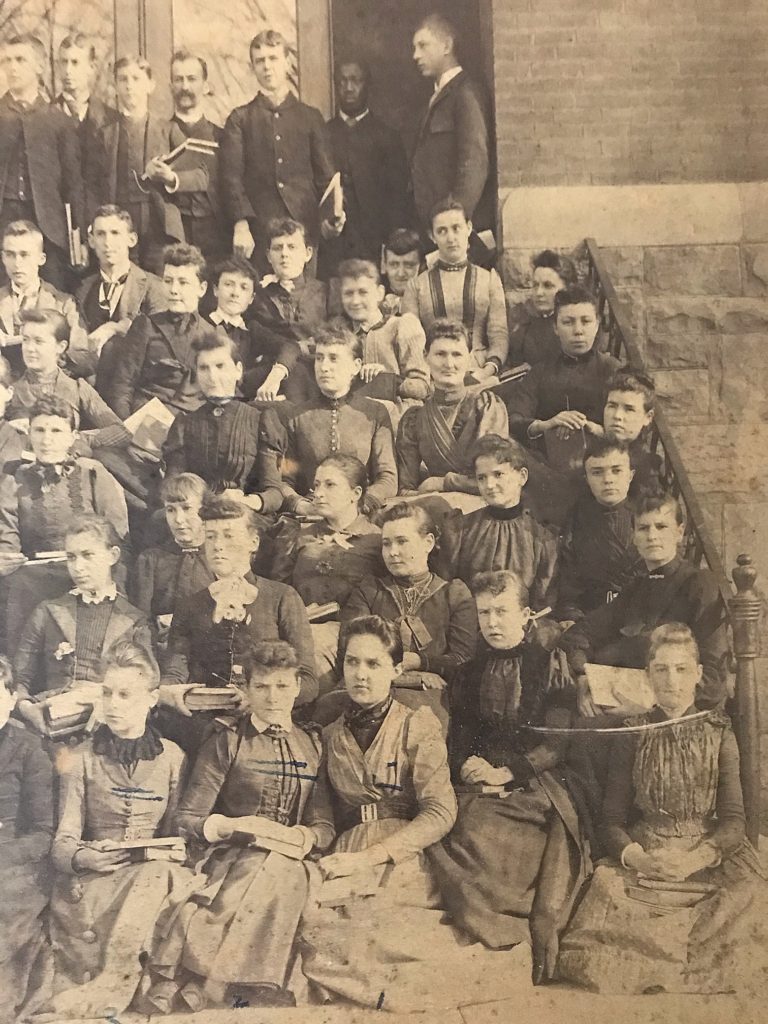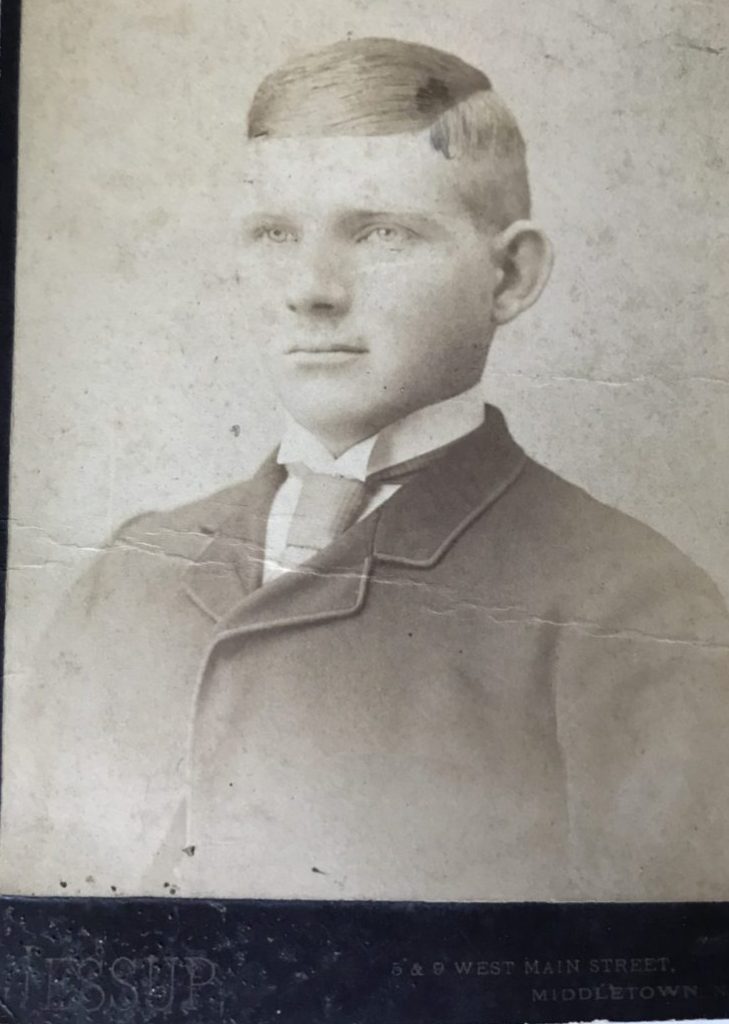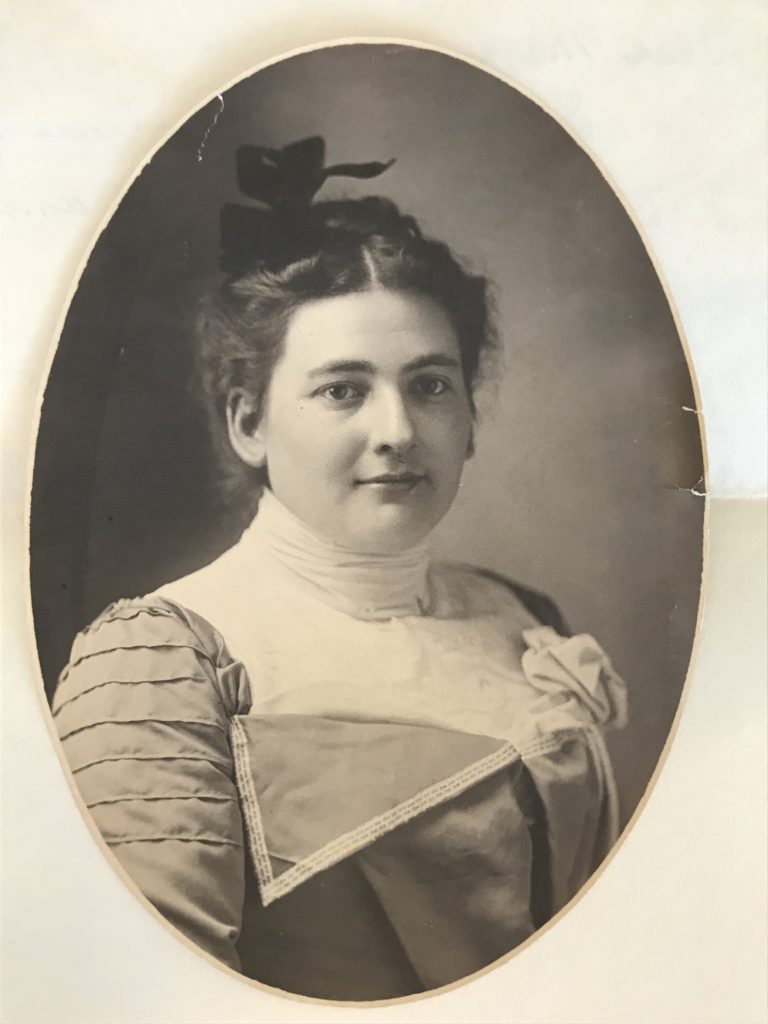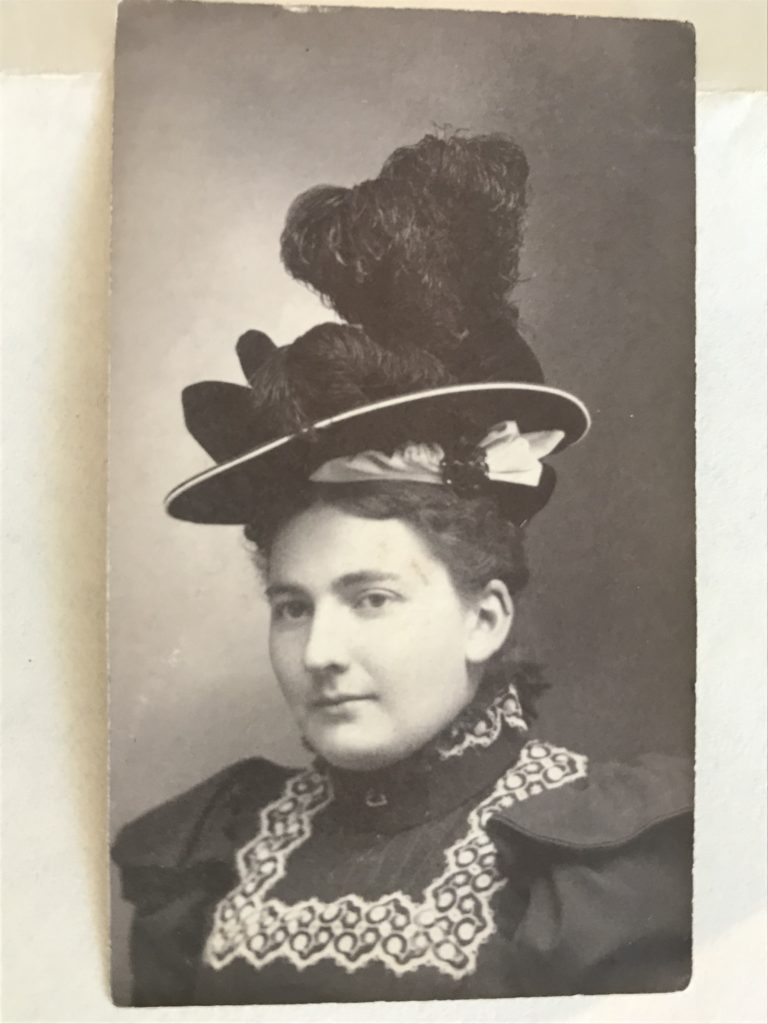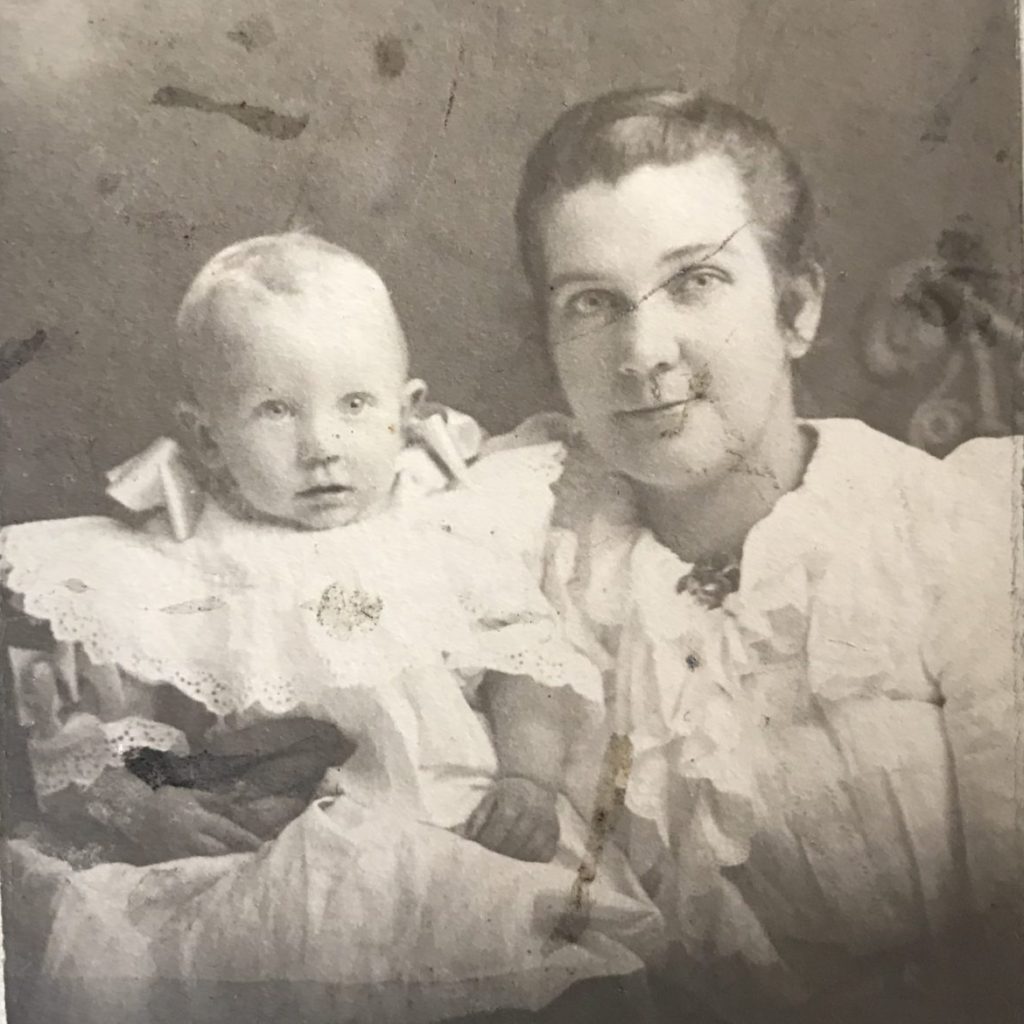Happy holidays, friends! I have been running behind schedule on Christmas cards, present-buying, meal-planning and…yes, blog writing since mid-November. I hate feeling that things are hurrying on faster than I can run. Maybe this is part of what attracts me to history and genealogy. It brings a certain peace knowing that one’s deceased ancestors are still waiting- ahem – right there where you left them.
My parents found the following picture among their things when they cleaned out their house to move. “You know who these people are?” my dad asked. He hadn’t any idea, even though their names were written on the back. In fact, that’s my dad’s maternal grandmother, Eleanor Sly, and Eleanor’s brother, James Clark Sly.
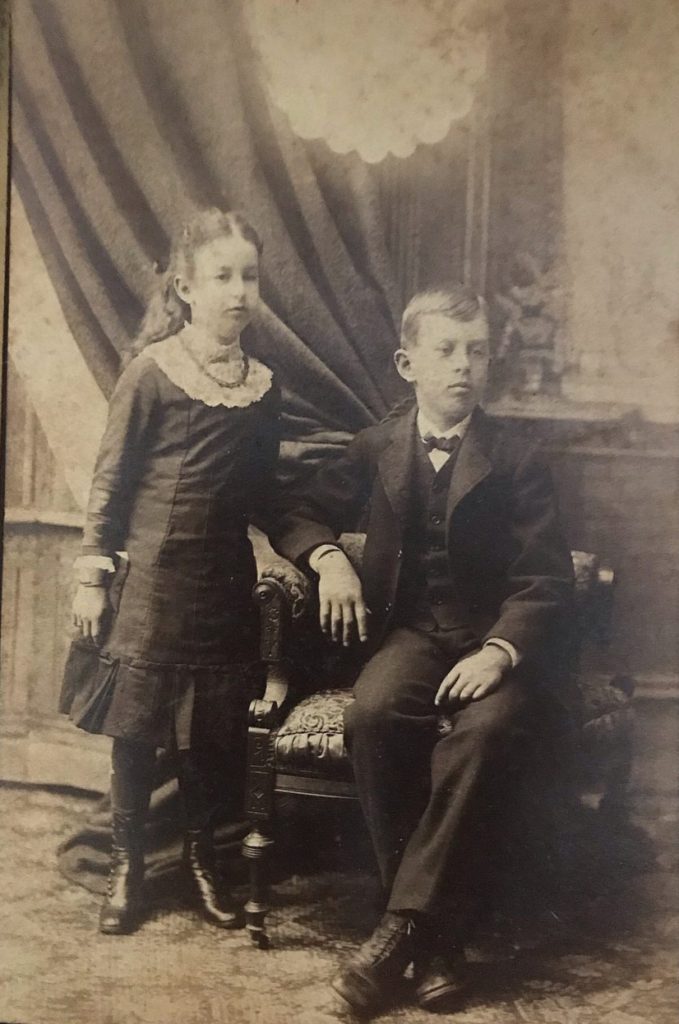
Eleanor (called “Nellie”) is only 10 years old in this picture and her brother, James, is listed as 12. That places the age of the photograph at about 1884. That’s the same year that France presented the U.S. with the Statue of Liberty. The new book on the market was Twain’s “Huckleberry Finn”.
If one interesting historical aspect stands out, it’s the amazing chandelier in the center. In fact, if the picture is from 1884, that would be a gasolier. Thomas Edison did not create a practical system for generating electricity in homes until 1882. (The White House was not wired for electricity until 1891). Therefore, it’s fair to assume that the bulbs in the picture must be lit with gas, not electricity.
In one way, the scene in the picture don’t look all that different than one we might take today. Yet that was 135 years ago. Eleanor and James are historically closer in that picture to the start of the Revolutionary War by 26 years than to my afternoon coffee.
Tonight, my parents will arrive for a two-week stay at our house. I hope that enough calm will prevail for us to spend time really talking to one another. The more I write these posts, the more I understand the importance of appreciating the people around us and asking about their past. Had I been a little more enlightened when my grandmother was alive, just think what stories I might have told here!
These last few weeks have been all about “right now” time (as in, I have to get this done ‘right now’). In writing this post, it has been nice to consider that all those gestures are just a tiny link between past and future. I always thought the lyric from “Have Yourself a Merry Little Christmas” put that idea nicely:
Here we are as in olden days
Happy golden days of yore
Faithful friends who are dear to us
Gather near to us once more
I hope you all enjoy this time with your loved ones!

